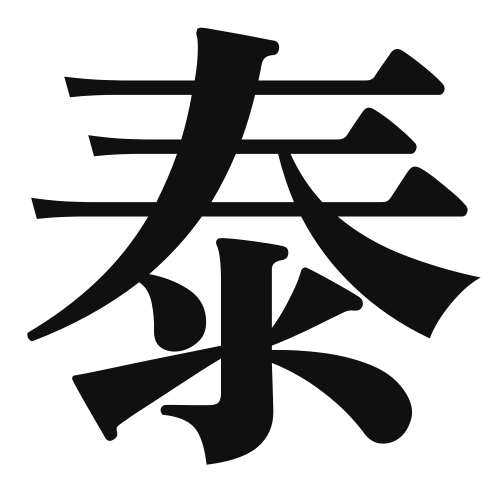1. Overview of Meaning
The kanji “泰” (tai) generally means “peace,” “calm,” or “safe.” It conveys a sense of tranquility and stability, often associated with a peaceful state of being.
2. Formation and Radical
Formation of the Kanji: The kanji “泰” is a phonetic-ideographic character (形声文字). It combines the meaning of “peace” with phonetic elements to convey its sound.
Radical: The radical for “泰” is “土” (tsuchi), which means “earth” or “ground.” This radical often relates to stability and foundation, reinforcing the meaning of peace and calmness.
3. Examples of Usage
Common Words and Phrases:
- 泰平 (たいへい, taihei) – peace, tranquility
- 安泰 (あんたい, antai) – safety, security
Example Sentences in Daily Conversation:
- この場所はとても泰平です。 (This place is very peaceful.)
- 彼は安泰な生活を送っています。 (He is living a secure life.)
4. Synonyms and Antonyms
Similar Kanji:
- 平 (へい, hei) – flat, level, peace; while both convey peace, “平” emphasizes flatness or equality.
- 安 (あん, an) – safe, secure; “安” focuses more on safety rather than the broader concept of peace.
Antonyms:
- 乱 (らん, ran) – disorder, chaos; this kanji represents the opposite of peace and calm.
- 危 (き, ki) – danger; it signifies a lack of safety and security.
5. Cultural and Historical Background
Relation to Japanese Culture: The concept of “泰” is deeply rooted in Japanese culture, where peace and tranquility are highly valued. It is often associated with traditional practices and philosophies that emphasize harmony.
Proverbs and Idioms:
- 泰然自若 (たいぜんじじゃく, taizenjijaku) – to remain calm and composed in any situation.
- 安泰無事 (あんたいぶじ, antai buji) – to be safe and sound, free from troubles.
